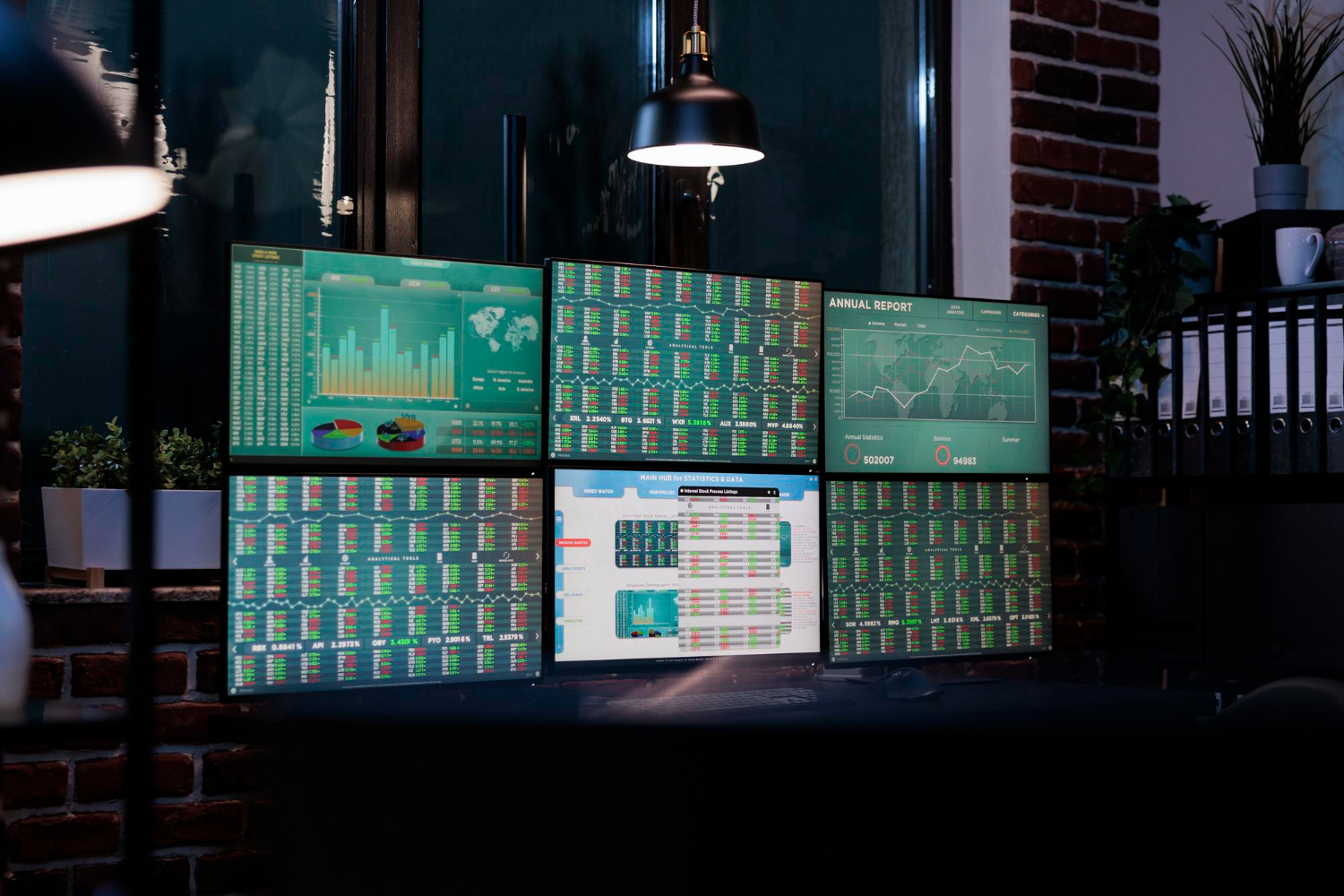Introduction
Wall Street firms now rely on artificial intelligence (AI) to perform tasks that analysts once handled. These range from predicting market moves to parsing human languages at scale. A subset of machine learning using neural networks now drives real-time decision support systems.
Ltd. and hedge funds compute trillions in trades using deep learning and large language models (LLMs). The term artificial intelligence describes systems that mimic human intelligence. Those tools work with graphics processing units and vast amounts of data to solve specific tasks at high speed.
1. The Rise of AI on Wall Street
AI has moved from theory to daily practice in trading. Financial firms now feed large data sets, including news feeds, trading records, filings, and social media, into neural networks. These networks operate via deep neural networks and trained LLMs.
These models scan volumes of text and numeric data in real time, transforming trading decisions. Policies train these systems to detect correlation signals, flag anomalies, and predict volatility. These tools apply natural language processing (NLP) on earnings calls, regulatory reports, and tweets. They output market sentiment and early warnings faster than human teams.
Read more: Banking Beyond Boundaries with AI’s Magical Shot
2. Deep Learning and Neural Networks in Use
Large neural networks now underpin algorithms for stock selection. Deep learning models learn patterns in price charts and public filings. Firms use graphs of correlation, clusters of sector moves, and sentiment indicators.
Standard machine learning models yield one set of signals. Deep neural network systems add context. These systems learn when markets are driven by macro trends or by sentiment from news headlines. They respond within seconds, relying on compute power from GPU-based systems to deliver real-time decision updates.
3. NLP Systems and Text-Based Analysis
Large language models allow teams to mine corporate earnings call transcripts. Algorithms dissect human languages, detect tone changes, and link them to pricing moves. Models link earnings text to price momentum shifts. Those signals guide trades, risk assessments, and research.
The combination of NLP with price data enhances decision support. They also process legal documents, SEC filings, and regulatory notices. Filing content triggers alerts across thousands of assets instantly.
Read more: Case-Study: Generative AI for Stock Market Prediction
4. Low-Latency Trading and Compute Power
Wall Street demands low-latency systems. These AI systems run on high-performance GPUs. That hardware processes large data volumes and complex decision models with minimal delay. Firms push compute power closer to market data feeds.
They deploy analytics nodes at trading venues. This enables real-time pricing models, risk simulations, and trade optimisation. Market scanners work continuously. Data enters the system, and AI model outputs come out in milliseconds.
5. Risk Management and Problem Solving
AI now handles risk scenario simulation. Models identify tail risk far from typical patterns. Those trained models detect anomalies like rogue trades or unseen liquidity drops. A machine learning model trained on historical drawdowns flags these moves.
Decision support tools highlight risk in dashboards. Traders act on signals immediately. Compliance teams review data. Controls run in parallel without slowing trade flows.
6. Strategy Generation Using LLMs
LLMs assist with strategy ideation. Traders input prompts asking for scenario analysis. The AI agent returns suggested strategies, rationale, and risk estimates. LLMs trained on financial texts and past trade patterns generate prompts.
Analysts validate those outputs. This speeds decision-making. Teams then fine-tune internal models for real conditions.
Analysts still perform final judgement. But the initial stage now uses smarter tools for planning.
Read more: How Agents Learn Through Trial and Error: Reinforcement Learning
7. Automation of Back Office Tasks
AI also automates compliance log review, trade documentation, and even code generation. NLP systems scan emails, chat logs, and contracts for key risk terms. They flag events.
Automation runs tasks at scale on historic data sets. Model agents assign reviews to humans if needed. This reduces overhead and human error in trade operations.
8. Challenges and Limitations
Regulators on Wall Street demand auditability. AI model decisions must trace back across training data, especially from LLMs. Neural networks often act as black boxes.
Firms build audit trails via model logs, data lineage, and feature attribution tools. Regulators require documentation of training data and all model outputs tied to trades.
Real-time model drift detection must run to ensure reliability. Teams retrain models on new data to reduce bias. Costs of large inference runs can strain budgets.
And firms must guard against adversarial input or prompt injection attacks. Control systems limit automated output in case of unexpected behaviour.
9. Real‑World Examples
Several high-profile funds now run mixed‑model AI systems. These manage portfolios based on sentiment signals from descriptions of thousands of stocks. Other firms test strategy using LLM‑generated trade hypotheses.
A few banks deploy AI to warn traders about unusual volumes ahead of major announcements. These systems integrate feeds of earnings transcripts, news, and social media chatter. Traders make faster and more precise decisions based on these signals. Firms reduce latency between insight and execution.
Read more: Can Machines Make You a Millionaire? AI in Fintech
10. Sentiment Detection in Executive Language
Firms quantify minor tone shifts in earnings calls. Words carry economic weight. Subtle pessimism in executive phrasing impacts investor actions. Models trained on past financial statements, transcriptions, and reaction timelines assign sentiment weight.
Slight negative deviation from neutral becomes actionable. Human analysts cannot consistently track every nuance. Machines detect them instantly and flag anomalies for high-speed review.
11. Compliance Review Through Automated Legal Parsing
Legal text grows by the day. Financial firms must respond quickly. NLP systems scan regulations, policy drafts, and compliance manuals. Legal requirements shift, often with minimal notice.
AI models trained on government releases extract conditions and compare them against internal processes. Flags appear where procedures lag. No firm can afford non-compliance. Real-time parsing cuts audit risk drastically.
12. Unstructured Blockchain Data Processing
Crypto platforms lack uniformity. Trade data remains inconsistent. AI parses blockchain logs, addresses, smart contract triggers, and liquidity pool movement.
Manual reviews fail in volume-driven crypto spikes. Pattern recognition filters wallet activity.
Abnormal transfers, insider signalling, and synthetic volume detection rely on cross-chain AI comparisons. Market makers monitor live feeds for early volatility indicators.

13. Claims Verification in Insurance Assets
AI reads crash photos. It also detects manipulation. Claimed damage vs. actual damage gets computed instantly.
Models trained on millions of prior images find inconsistencies. Fraud detection engines correlate metadata, time stamps, and client history.
Policy records align with incident narratives. Errors surface faster than manual checks. Payments follow verified logic, not persuasion.
Read more: Generative AI and Supervised Learning: A Perfect Pair
14. Earnings Summaries via LLMs
Analysts no longer write all internal memos. LLMs summarise quarterly results using structured tables and unstructured CEO commentary. Model outputs undergo quick edits. Financial nuance gets preserved via training on thousands of actual market responses.
Result: memos in minutes, not days. Internal email chains shorten. Investment decisions accelerate. Interpretations stay aligned across departments.
15. Infrastructure for Low-Latency Inference
GPUs run deep learning inference at scale. Wall Street data centres upgrade continuously. Interruptions degrade performance. Every microsecond lost affects trade success. These systems prioritise low-latency, fault-tolerant setups.
Firms invest in private hardware nodes for sovereignty over critical model responses. Vertical integration from feed ingestion to execution prevents mid-chain delays.
16. Training Data Calibration by Market Events
Supervised learning adjusts model weights. Past earnings surprises form part of this. Geopolitical shocks and bond movements provide real-world labels. Engineers apply loss functions specifically crafted for market sensitivity.
A model trained on market sentiment misfires without domain-specific indicators. AI with improper calibration causes unintended high-frequency trade shifts. Precision remains critical.
Read more: Smarter and More Accurate AI: Why Businesses Turn to HITL
17. Social and Open Web Monitoring for Trading Signals
Wikipedia edits get tracked. Blog posts from unknown analysts carry signals. Twitter sentiment sways retail flows. AI parses these domains in milliseconds.
If Tesla’s page gets changed to note a CEO health issue, the system triggers alerts. No delay. Pre-market movements tie directly to early signals from these public domains. Model weights reflect source trust scores.
18. Synthetic Benchmarking for Stress Tests
Financial institutions simulate stress using synthetic portfolios. These portfolios mimic volatile market conditions. AI creates controlled shocks across asset classes. Realistic failures stress test liquidity ratios.
Algorithms build thousands of synthetic client behaviours. Portfolio rebalancing patterns emerge under stress. Results guide margin calls and collateral adjustments. No human can simulate this complexity at scale.
19. NLP-Based News Impact Scoring
Not every news headline moves markets. AI filters noise. Natural language processing assigns impact scores based on event type, source credibility, and asset correlation. A central bank rumour carries higher weight than a political tweet.
Scoring mechanisms reduce reaction time. Risk managers see projected volatility before market movement. Forecasts sharpen with historical impact tagging.
Read more: Fine-Tuning Generative AI Models for Better Performance
20. AI-Guided FX Trading Triggers
Currency pairs respond to unpredictable macroeconomic shifts. AI models trained on years of foreign exchange (FX) volatility now trigger trades without human interference. Historical interest rate spreads, sentiment indexes, and commodity exposure create signals.
Inputs adjust in real time. Data pipelines from live central bank statements improve prediction accuracy for short-term FX moves.
21. Structured Credit Risk Modelling
Corporate bonds carry embedded risks. Default probability remains difficult to measure. AI calculates it based on quarterly cash flow, industry sentiment, supplier health, and macro exposure.
Models combine structured data with unstructured news and ESG updates. Scores get recalculated daily. Portfolio managers adjust weightings dynamically. Risk gets priced more efficiently.
22. Microstructure Analysis in Dark Pools
Dark pools offer anonymity. But execution quality varies. AI tracks fill rates, quote matching precision, and timing irregularities. Patterns suggest information leakage or inefficient pricing.
Quant desks reroute flow based on historical success per venue. Continuous learning refines routing decisions. Better fill performance reduces slippage and improves alpha retention.
23. Generative AI for Contract Abstraction
Thousands of pages of contracts overwhelm legal teams. Generative AI models process terms, identify risk clauses, and abstract obligations. Training data comes from merger documents, swap agreements, and indemnity contracts.
Output includes summarised risks, renewal alerts, and compliance requirements. Legal reviews now require half the time. Errors decrease, and due diligence accelerates.
Read more: NLP vs Generative AI: Key Differences and Connections
24. Future Outlook
AI on Wall Street continues to evolve rapidly. Future systems will use self‑learning agents with reinforcement learning to adapt strategies. New tools will combine LLMs, real time feeds, and quantitative models into unified AI systems.
Firms will use meta‑models that adjust models on the fly as markets shift. Cloud computing will enable real‑time AI scaling across global networks. Real time learning loops will shorten feedback cycles.
How TechnoLynx Can Help
TechnoLynx works with financial firms to build custom AI systems. We design natural language processing pipelines to scan financial news and filings. We build neural network models and train them on large amounts of data for real time responding.
We optimise deep learning models for GPU platforms to reduce latency. We help design audit trails for compliance, including documenting model decisions and building traceable pipelines. We integrate decision support dashboards, prompt‑based ideation with LLMs, and risk alert systems. We support cloud environments and on-prem deployments.
We help firms solve problems across trading desks, compliance, and operations. Whether you need models to classify sentiment in earnings calls or detect anomalies in market volumes, TechnoLynx can deliver safe, efficient systems for your needs. Contact us now to start collaborating!













